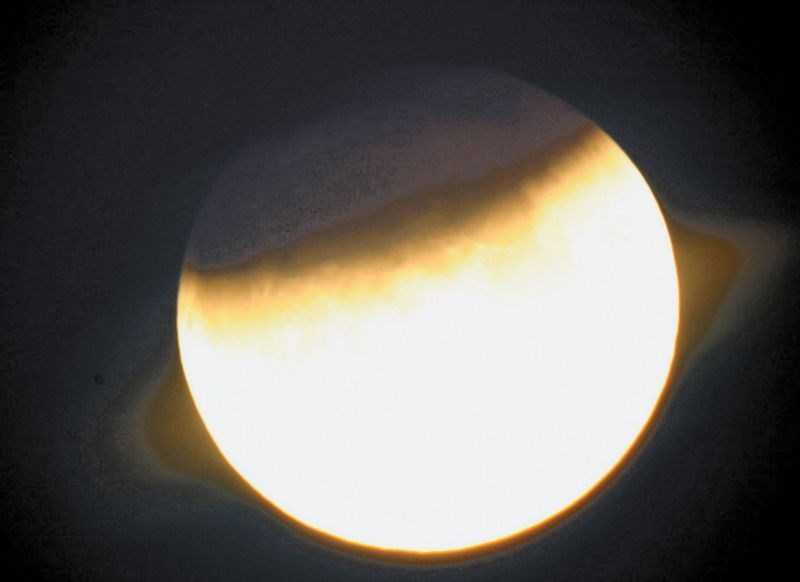A partial lunar eclipse gave late-night Prince George viewers a show on the biggest screen available to humanity.
This was the first lunar eclipse of 2010 (there was a solar eclipse on January 15). No one in the the eastern time zones of North America got to see it, but it was in good effect for those in western Canada. It was best observed in the South Pacific.
Despite the late hour, Doug Wayland and a party of others gathered on a hill near the Bon Voyage / Art Knapps plaza and enjoyed the silent spectacle.
"I was joined by Lorne Davies and his wife and daughter. We arrived there at 2:30 a.m. and the sky was clear," Wayland said. "The moon was already in penumbral eclipse, but the darkening was barely detectable. Shortly after 3 a.m. the moon started to darken dramatically on the upper left limb (northwest limb of the moon) as it slowly entered the umbral shadow. Over the next hour we watched the dark shadow of the earth creep across the face. As the moon sunk lower in the southwest it began to be obscured by thin alto stratus cloud. The cloud thickened and totally hid the moon about a half hour before it was due to set."
According to the National Aeronautics and Space Administration (NASA), the moon's ascending node was in western Sagittarius about three degrees east of the Lagoon Nebula.
"In spite of the fact that barely half of the moon enters the umbral shadow (the moon's northern limb dips 16.2 arc-minutes into the umbra), the partial phase still lasts two and two-thirds hours," said a NASA statement.
The next eclipse, this one a solar event, happens on July 11 with full effect given to the South Pacific island and South America.
The next lunar eclipse, which, NASA said, will be particularly well seen in North America, happens on December 21.
There are only these four eclipses in 2010.



